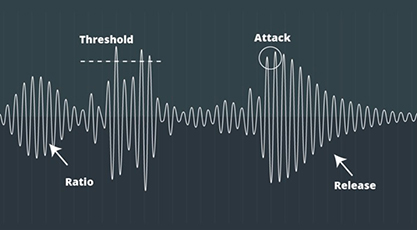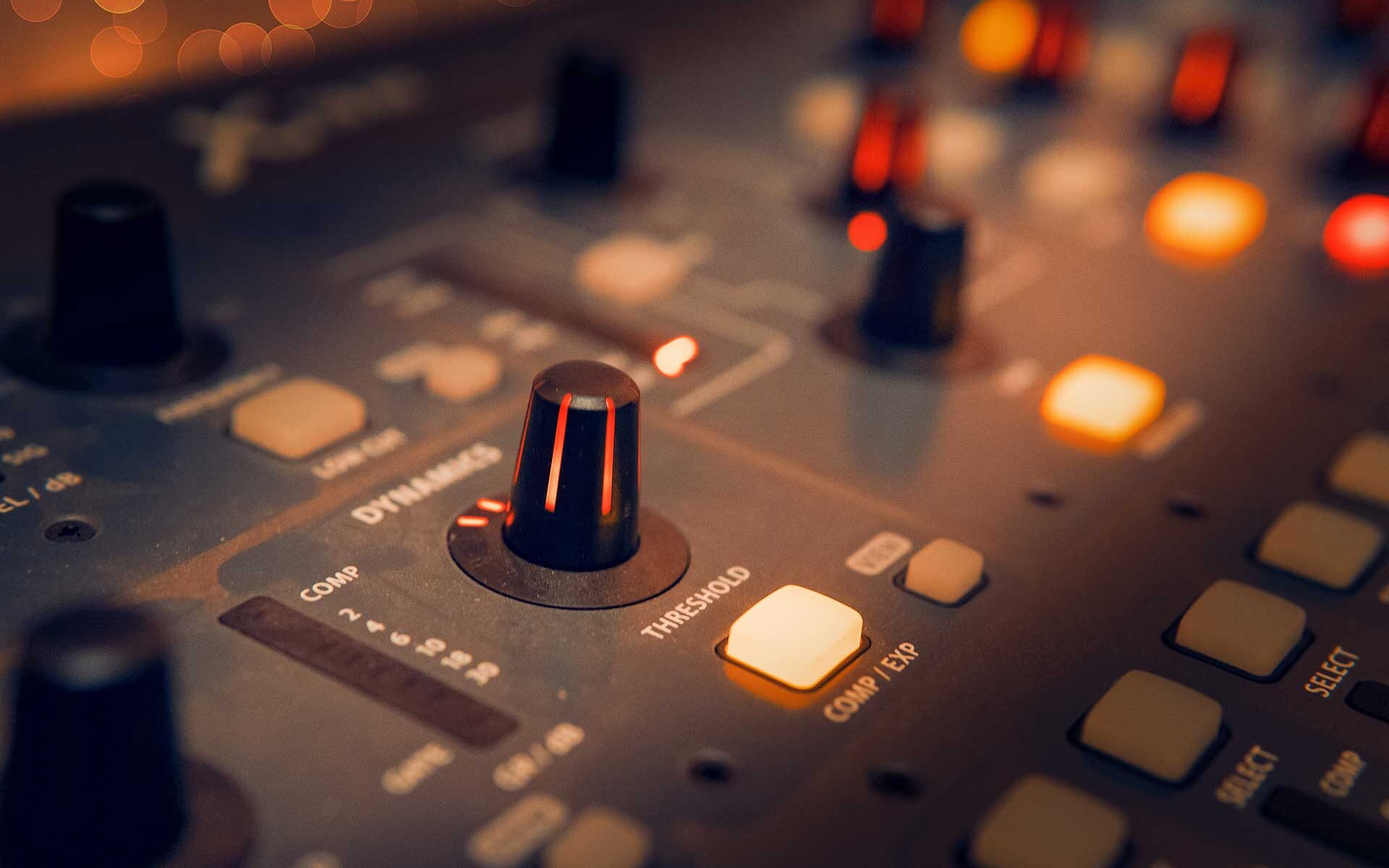By Amit Sachdeva, Senior Sound Engineer, Musicloudstudio & Technology
We shall discuss in detail the types of compressor and color in Part 2 of this blog.
How does a compressor contribute to achieving an outstanding mix? Let’s delve into the fundamentals.
Compressors primarily serve the role of managing the dynamic range of an audio signal, which involves controlling the signal level beyond a specified threshold. To put it simply, dynamic range refers to the difference between the loudest and softest parts of an audio signal.

Nearly all compressors you encounter will feature these essential parameters:
- Threshold
- Ratio
- Attack Time
- Release Time
- Knee
- Make-up Gain
Threshold: This represents the signal level (in dB) above which the compressor starts to affect the audio.
Ratio: It dictates the degree of compression applied to the signal once it surpasses the threshold. For instance, a ratio of 10:1 implies that for every 10 dB above the threshold, the compressor permits only 1 dB.
Attack Time: This determines how swiftly the compressor responds to the signal after it crosses the threshold.
Release Time: It governs the duration it takes for the compressor to cease its compression effect after the signal drops below the threshold.
Knee: This parameter influences the smoothness of the compression application.
Make-up Gain: It elevates the signal level to compensate for the reduction caused by compression.
Each compressor operates with its distinct internal circuitry, which imparts a unique sonic character to it. Consequently, a single compressor may not be suitable for all your applications. Hence, audio compressors are used not only to manage dynamic range but also to imbue the audio signal with a particular color or character by simply passing it through (with or without compression).
In Part 2 of this blog, we will delve into different types of compressors and their tonal characteristics.
